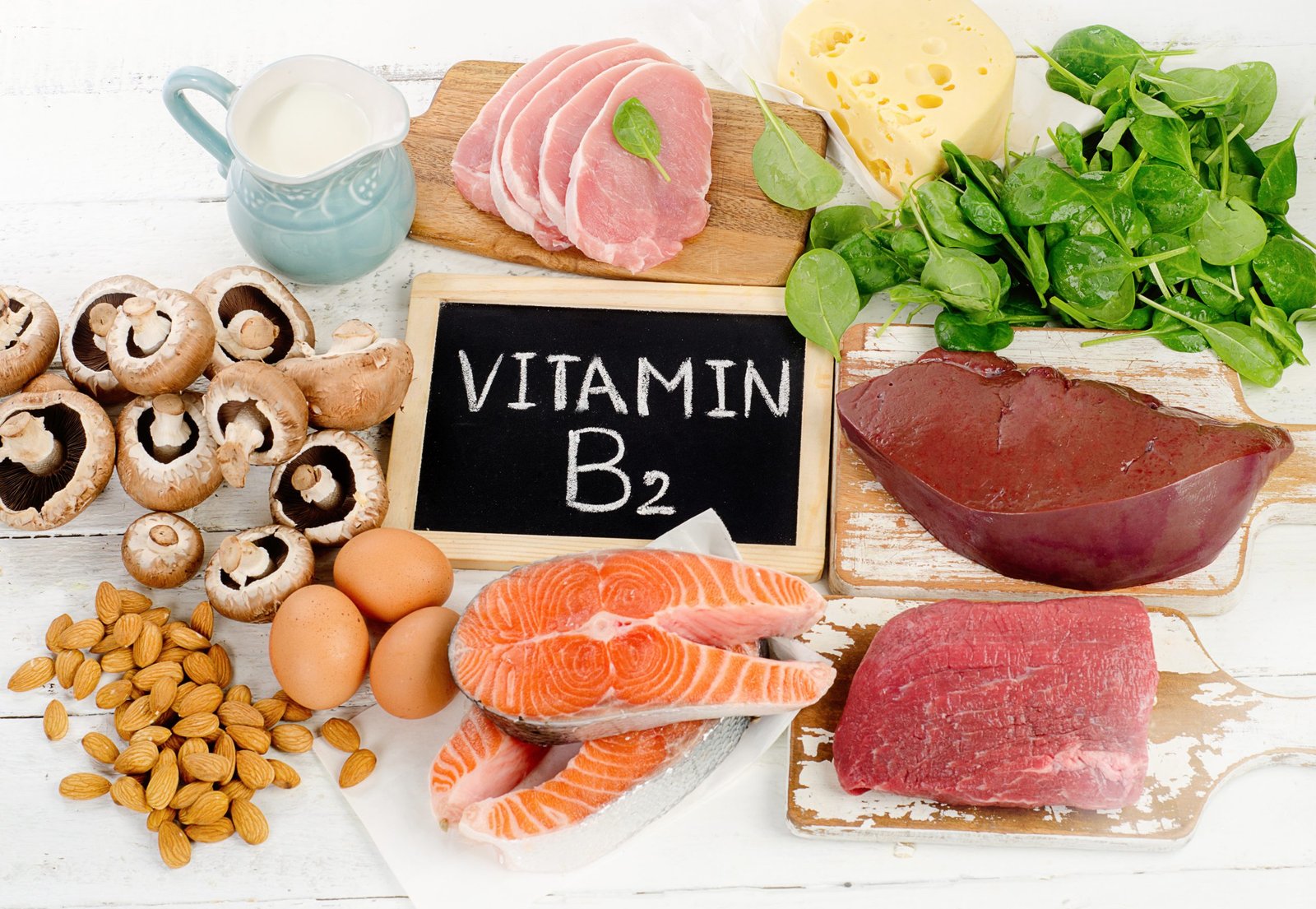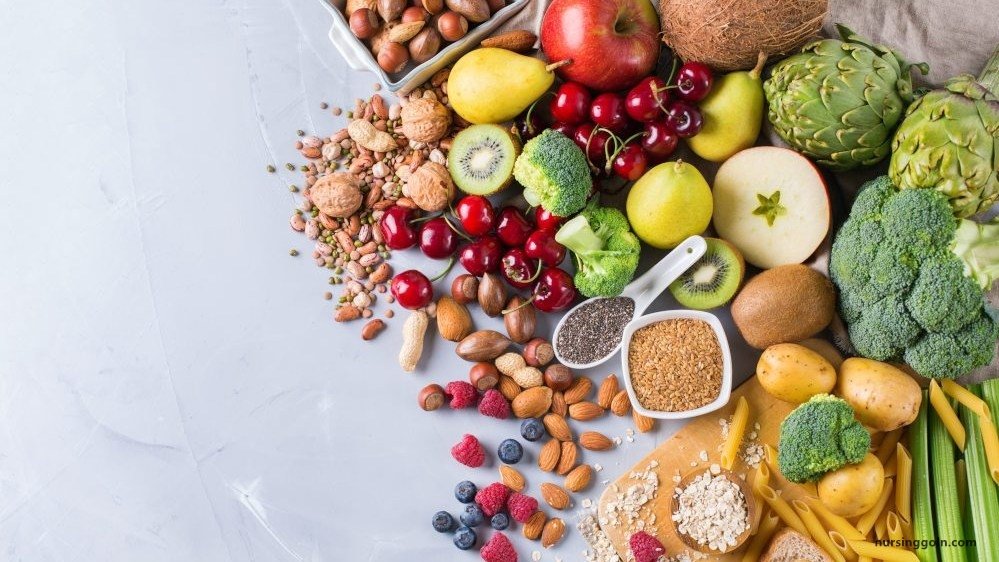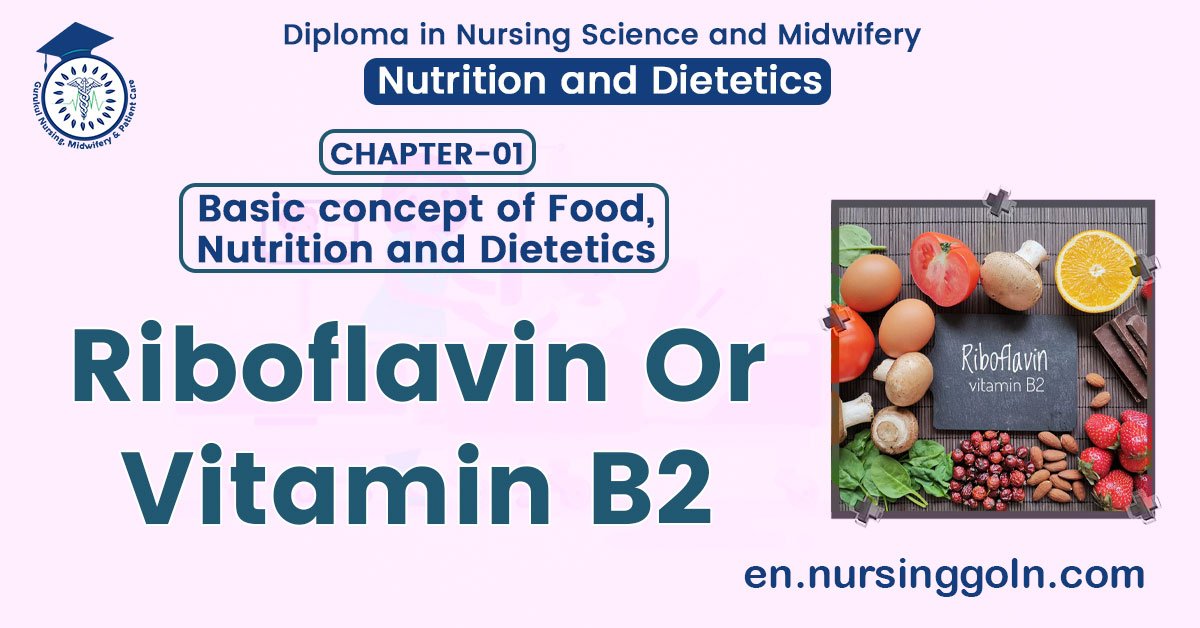Vitamin B2 or Riboflavin – This book covers the entire syllabus of “Nutrition and Dietetics” prescribed by BNMC-for all Diploma in Nursing Science and Midwifery students. We tried to accommodate latest information and topics. This book is examination friendly setup according to the teachers’ lectures and examination’s questions. At the end of the book previous university questions are given. We hope in touch with the book students’ knowledge will be upgraded and flourished. The unique way of presentation may make your reading of the book a pleasurable experience.

Vitamin B2 or Riboflavin
Riboflavin or Vitamin B2 is the yellow enzyme which is heat stable unlike other B Vitamins. Riboflavin in the combined form with proteins form flavo proteins or yellow enzymes.
Chemical structure:
In chemical structure it is a flavin derivative combined with the pentose (d-ribose), a carbohydrate having five carbon atoms.
It was named riboflavin because of the similarity of part of its structure to that of ribose sugar.
Active form (co-enzyme form):
1. FMN (flavin mononucleotide): it is composed of flavin + ribitol + phosphate.
2. FAD (flavin adenine dinucleotide): it is composed of FMN + AMP.
Digestion and Absorption of Riboflavin:
Riboflavin in food is present either in free-state or in combination with a phosphate or with protein and phosphate. This vitamin is absorbed in the upper part of the small intestine and is then phosphorylated in the intestinal wall. In the body it is presented as the coenzyme or flavoproteins.

Functions of Riboflavin:
1. Riboflavin is essential for carbohydrate, fat, and protein metabolism.
2. It is also necessary for tissue maintenance, especially the skin around the mouth, and for healthy eyes.
3. These substances act as coenzymes in many biological reactions primarily in oxidation- reduction, and dehydrogenation reaction
4. Release of energy from glucose, fatty acids and amino acids.
5. Conversion of vitamin B, and folate to active coenzymes.
6. It is essential for the formation of red blood cells
7. It is required for the synthesis of glycogen.
(Ref: Sheilla John’s/1/81)
Daily requirement of riboflavin:
The recommendation for all including pregnant and lactating women is 0.6 mg per 1000 Kcal.
Sources of riboflavin:
- Animal sources: Milk and milk products, egg, meat and fish in sufficient amount.
- Plant sources: Green leafy vegetables, groundnut and pulses.

Effects of riboflavin deficiency:
1. Soreness and burning of the mouth and tongue.
2. Lesions at the angles of the mouth called Angular Stomatitis.
3. The inflammation of the tongue called glossitis
4. Dry chapped appearance of the lip with ulcers termed cheilosis.
5. The skin becomes dry and results in seborehoeic dermatitis.
6. Photophobia, lacrimation, burning sensation of the eyes and visual fatigue.
7. Decreased motor co-ordination
8. Normocytic anaemia
Read more:
